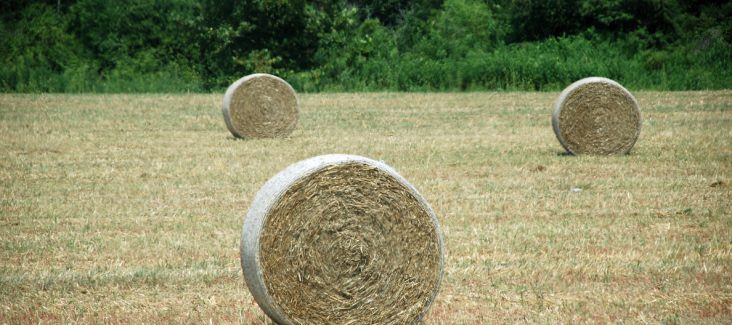Farmers have decisions to make of crop residue use once harvest is over
by August 23, 2022 4:54 pm 959 views

A severe drought this summer has left at least half of Arkansas’ pasturelands in poor or very poor condition, according to the U.S. Department of Agriculture. This will likely lead to a drop in hay production, which means livestock producers will have to find alternate food sources.
One possible solution would be to collect the crop residues that are left once the harvest is completed. That may help livestock producers, but it could have unintended consequences for row crop fields. Burning fields, a common money-saving practice by many in the Arkansas Delta to clear crop refuse, could also have an impact on field quality and next year’s profitability.
With uncertainty in the market for fertilizer prices over the next year, a University of Arkansas System Division of Agriculture soil health expert advised producers at the 2022 Rice Field Day earlier in August to consider the cost of replacing nutrients that will leave their field if they burn crop residue, or sell it for animal forage, after the harvest.
Trent Roberts, associate professor of soil fertility and soil testing, said one of the biggest questions he has received this year is about the value of crop residue. With drought conditions this year, row crop farmers are being asked by animal producers to take the crop residue off their hands for forage.
According to Roberts’ calculations, a 200-bushel-per-acre rice crop produces about five tons of residue worth about $275 per acre in nutrients. That would contain about $85 per acre in nitrogen, about $30 per acre in phosphorus, about $150 per acre in potassium, and about $10 per acre in sulfur.
“At some point you’re going to have to pay to replace that, so the question becomes are you going to get that cost from the person who is hauling off the hay or pay for it someday down the road?” Roberts said. “The biggest mistake you can do is give this residue away and not realize all of a sudden your soil test K starts dropping, your P test starts dropping, and two or three years down the road you’re having to pay for these nutrients that you have given away.”
When burned, the nitrogen and sulfur are lost. With phosphorus and potassium, “wherever the ash goes is where that nutrient goes,” Roberts said. “It may end up blowing away with the smoke, or washing down to the corner of the field,” he added.
Knowing the right amount of fertilizer to keep from wasting money is also important. Roberts prompted producers to check out the Division of Agriculture’s Decision Support Software, including the Potash Rate Calculator, as tools to maximize yield and profitability. The software takes soil test results, yield potential and the price of fertilizer in consideration to provide recommended amounts of fertilizers.
Roberts said he expects mined nutrients like phosphorus and potash to remain high for the next 12 to 18 months. Nitrogen prices have been unpredictable because of unknown entities exiting from the market and driving prices down temporarily.
“We’re not sure who was not buying nitrogen fertilizer, but if the price of natural gas remains high and some of these unknown countries or unknown entities that typically buy fertilizer and took a year off jump back in the market once again, we could see those prices go up quite a bit,” he said.
Fertilizer costs account for one-fifth of farm input costs each year, according to the U.S. Foreign Agriculture Service. It accounts for 36% of corn input costs. Corn prices have been higher this year, but in Arkansas the number of corn acres dropped this year from 850,000 in 2021 to 710,000 this year. The main reason producers cited was fertilizer costs.
